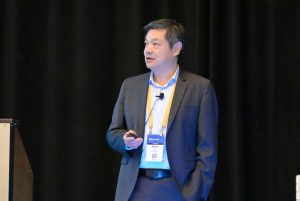
"Demand planning is a team sport," says Davis Wu, Global Lead of Demand Planning and Analytics at Nestlé S.A. The team at Nestlé includes demand planners, demand analysts and data scientists, who all work together to ensure that Nestlé products remain in stock.
Many demand analysts can be seen as citizen data scientists, said Wu, and SAS® Viya® allows them to work with data and "get down to street level." Expanding that point further, he adds, "You can still use machine learning and other capabilities without coding. You can still execute the most sophisticated machine learning algorithms without the data science background."
Challenges for demand planners and analysts at Nestlé include increased products through innovation, increased demand volatility, unforeseen geopolitical situations and COVID-related changes in buying patterns.
"Those challenges mean we have to be smarter than we used to be," explained Wu. "We need to be more data-driven in terms of analyzing all key drivers." This means taking into account baseline sales, seasonal sales and holidays along with impactors like demographics, COVID-19, government regulations, paid promotions and more.
Demand planning horizons
Speaking at SAS Innovate in Orlando, Wu shared how Nestlé divides its demand planning and time-series analysis work into four broad horizons:
- Executional horizon: Looking 1-6 weeks out to ensure product availability.
- Operational horizon: Projecting the next 7-26 weeks to align and sign off business plans.
- Tactical horizon: Planning for the next 7-18 months to prepare tactical resources.
- Strategic horizon: Advanced planning beyond 18 months to design networks and production capacity.
This framework is tailored to strategic planning horizons and designed to support specific objectives. Each horizon can be planned at regional or global levels, and for key markets worldwide, including North America, Central America and Europe.
Communicating forecasts to decision-makers
Wu encourages the demand planning team to tell data-driven stories. "Demand planners must be able to convince cross-functional partners that their forecast is useful," says Wu. "They must articulate a convincing story about what is happening, what is the prediction, and what can we do better, including scenario planning."
To illustrate the value of the demand planning practices outlined above, Wu described how his team analyzed demand patterns from countries hit by the pandemic earlier to then anticipate how the pandemic would drive sales in other countries hit by later pandemic waves. They could find patterns in different product categories during the pandemic and predict what would come for countries impacted later.
Wu's team has also had success using machine learning to improve the accuracy of its predictions. "Adding neural network predictions and time series forecasts on residuals resulted in improved accuracy in demand predictions," said Wu.
Wu also described how his team uses causal modeling to generate additional insights and deliver tangible business value when increasing media spending in key markets. "Most promotion sales make a loss of profit in the CPG industry," explained Wu. "Promotions are needed to keep market share but don’t make immediate profits." Offering visibility into how those promotions will impact sales can help media buyers make better decisions.
Finally, Wu recommends following a 70/20/10 rule for demand planning. 70% of business processes should be a matter of repeating and adopting the best technologies to automate at scale. From there, look to identify the 20% of business processes that need improving and adopt the right technologies to empower business users to make improvements. The last 10% are processes where you want a breakthrough. Here you should take the time to really dig into the data and rely on expert knowledge for innovation and creativity.
